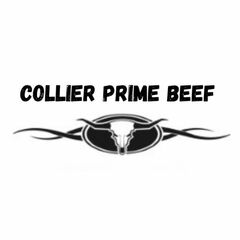Orders over $75 ship free from farms & butchers in your region!
Enter your zip code for the most accurate shipping info!
ChopLocal Guide to Grilling

Grilling is more than a cooking method - it's an American pasttime! But there are so many little tricks of the trade that can turn your grilled meat from mediocre to magnificient! Check out our tips and FAQs on grilling below!
Top 10 Tips for Grilling
-
Preheat your grill: Preheating your grill is essential for even cooking and preventing food from sticking to the grates. It's best to preheat your grill for at least 10-15 minutes before adding your food.
-
Clean your grill: Cleaning your grill grates before and after each use will prevent food from sticking and make cleanup easier. Use a grill brush to remove any debris and then wipe the grates with a damp cloth.
-
Oil the grates: Before adding food to the grill, lightly brush the grates with oil to prevent sticking.
-
Use a meat thermometer: Using a meat thermometer is the best way to ensure that your food is cooked to the desired temperature and is safe to eat.
-
Let meat rest: After grilling meat, let it rest for a few minutes before cutting into it. This allows the juices to redistribute, making for a juicier and more flavorful piece of meat.
-
Don't press down on the meat: Avoid pressing down on meat with a spatula as this will release the juices and can make the meat dry.
-
Use the right tools: Use long-handled tongs, a spatula, and a grill brush to make grilling easier and safer.
-
Use indirect heat: For larger cuts of meat or foods that take longer to cook, use indirect heat by placing the food on one side of the grill and keeping the other side off.
-
Experiment with marinades and rubs: Marinades and rubs can add flavor to your food and tenderize tougher cuts of meat.
-
Don't walk away from the grill: Stay close to the grill while cooking to prevent food from burning or overcooking. Enjoy the grilling process and don't forget to have fun!
What are the best cuts of beef for grilling?
There are many cuts of beef that are great for grilling, each with its unique flavor and texture. Here are some of the best cuts of beef for grilling:
-
Ribeye: Ribeye is a juicy and flavorful cut of beef that is well-marbled with fat. It's perfect for grilling because the high heat of the grill helps to melt the fat, which creates a tender and juicy steak.
-
Filet mignon: Filet mignon is a lean and tender cut that is perfect for grilling. It's a bit less flavorful than some other cuts, but it's incredibly tender and can be seasoned with a variety of different spices and herbs.
-
New York strip: New York strip is a flavorful cut of beef that is perfect for grilling. It's similar to ribeye but with slightly less fat, which makes it a bit leaner.
-
Flank steak: Flank steak is a lean and flavorful cut that is perfect for grilling. It's great for marinating and can be grilled quickly over high heat for a delicious meal.
-
Sirloin: Sirloin is a versatile cut of beef that is perfect for grilling. It's leaner than ribeye or New York strip, but it still has plenty of flavor.
Regardless of which cut you choose, it's important to use a meat thermometer to ensure that the beef is cooked to the desired doneness. The USDA recommends cooking beef to a minimum internal temperature of 145°F (63°C) for medium-rare, 160°F (71°C) for medium, and 170°F (77°C) for well-done.
What are the best cuts of pork for grilling?
There are several cuts of pork that are great for grilling, each with its unique flavor and texture. Here are some of the best cuts of pork for grilling:
-
Pork chops: Pork chops are a classic grilling cut, and they are versatile enough to be seasoned with a variety of different spices and herbs.
-
Pork tenderloin: Pork tenderloin is a lean and tender cut that cooks quickly and is perfect for grilling. It's a great choice if you're looking for a healthier option.
-
Pork ribs: Pork ribs are a staple at backyard barbecues and are a favorite of many grill masters. They can be prepared with a dry rub or marinated in a sauce, and slow-cooked to perfection.
-
Pork shoulder: Pork shoulder is a flavorful and juicy cut that is perfect for grilling. It can be slow-cooked over low heat for several hours, or grilled quickly over high heat.
-
Pork belly: Pork belly is a fatty cut that is perfect for grilling. It can be seasoned with a variety of different spices and herbs and cooked slowly over low heat until it's crispy and tender.
Regardless of which cut you choose, it's important to use a meat thermometer to ensure that the pork is cooked to a safe temperature of 145°F (63°C) for whole cuts or 160°F (71°C) for ground pork.
What do you need to keep in mind when grilling turkey or chicken?
Grilling turkey or chicken can be a delicious and healthy option, but it's important to keep a few things in mind to ensure that your meat is cooked safely and to avoid any dryness or uneven cooking. Here are some things to keep in mind when grilling turkey or chicken:
-
Marinate the meat: Marinating turkey or chicken can help to add flavor and moisture to the meat. Use a marinade that includes an acidic component, such as lemon juice or vinegar, which can help to tenderize the meat.
-
Preheat the grill: Preheat your grill to medium-high heat before adding the meat. This will help to ensure that the meat cooks evenly.
-
Use a meat thermometer: Use a meat thermometer to ensure that the meat is cooked to a safe internal temperature. For chicken, the internal temperature should reach 165°F (75°C), and for turkey, it should reach 165°F (74°C) in the thickest part of the meat.
-
Use indirect heat: To avoid drying out the meat, use indirect heat when grilling turkey or chicken. This means that the meat is not placed directly over the flame but instead is placed on a cooler part of the grill. This will help to ensure that the meat cooks evenly and stays moist.
-
Flip the meat: Flip the meat occasionally while grilling to ensure that it cooks evenly. Use tongs to avoid piercing the meat and letting the juices escape.
-
Let the meat rest: Once the meat is cooked, let it rest for a few minutes before slicing or serving. This will help to ensure that the juices distribute evenly throughout the meat, making it more tender and juicy.
By keeping these tips in mind, you can grill turkey or chicken safely and ensure that it's cooked to perfection.
Which cuts of lamb are best for grilling?
Lamb is a versatile meat that can be prepared in many ways, including grilling. Here are some of the best cuts of lamb for grilling:
-
Lamb chops: Lamb chops are a classic cut for grilling. They are typically cut from the rib or loin and are best grilled over high heat for a short amount of time to retain their tenderness.
-
Lamb steaks: Lamb steaks are a larger cut of lamb that are ideal for grilling. They are typically cut from the leg or shoulder and are best marinated before grilling to add flavor and tenderness.
-
Leg of lamb: Leg of lamb is a popular cut for roasting, but it can also be grilled. It's a larger cut that should be butterflied or deboned before grilling to ensure even cooking.
-
Lamb kabobs: Lamb kabobs are a popular option for grilling because they are easy to prepare and cook quickly. Cut lamb into bite-sized pieces and skewer with vegetables before grilling over high heat.
-
Lamb burgers: Lamb burgers are a delicious alternative to traditional beef burgers. They can be made with ground lamb and grilled over medium-high heat until cooked through.
When grilling lamb, it's important to keep in mind that lamb has a unique flavor that can be enhanced with marinades and seasonings. Lamb is also best cooked to medium-rare to retain its tenderness and juiciness. Use a meat thermometer to ensure that the internal temperature of the lamb reaches 145°F (63°C).
How do you grill bison?
Grilling bison is similar to grilling beef, but there are a few differences to keep in mind due to the leaner nature of bison meat. Here's how to grill bison:
-
Preheat the grill: Preheat your grill to medium-high heat.
-
Prepare the bison: Season the bison with your favorite spices and seasonings. You can use a dry rub or a marinade to add flavor to the meat.
-
Oil the grates: Using tongs and a paper towel, oil the grates to prevent the bison from sticking to the grill.
-
Grill the bison: Place the bison on the grill and cook for about 3-5 minutes per side, depending on the thickness of the meat. Use a meat thermometer to ensure that the internal temperature reaches 135°F (57°C) for medium-rare or 145°F (63°C) for medium. Be careful not to overcook the bison as it can become tough and dry.
-
Let the bison rest: Once the bison is cooked, let it rest for a few minutes before slicing or serving. This will help to ensure that the juices distribute evenly throughout the meat, making it more tender and juicy.
-
Serve and enjoy: Serve the bison with your favorite sides and enjoy!
When grilling bison, it's important to keep in mind that it's a leaner meat than beef, so it can cook faster and dry out more quickly. Use a marinade or a basting sauce to add moisture to the meat and be sure to watch it closely while grilling to avoid overcooking.
Which types of fish are best for grilling?
Many types of fish are great for grilling, but here are some of the best options:
-
Salmon: Salmon is a popular choice for grilling due to its rich, flavorful taste and firm texture. It holds up well on the grill and can be seasoned with a variety of spices and sauces.
-
Tuna: Tuna is another firm fish that is well-suited for grilling. It has a meaty texture and a mild, slightly sweet flavor that pairs well with bold marinades and sauces.
-
Halibut: Halibut has a firm texture and a mild, slightly sweet flavor. It's a great choice for grilling as it holds up well on the grill and can be seasoned with a variety of spices and sauces.
-
Mahi Mahi: Mahi Mahi has a firm texture and a mild, slightly sweet flavor. It's perfect for grilling as it holds up well to high heat and can be seasoned with a variety of spices and herbs.
When grilling fish, it's important to keep in mind that it can be delicate and prone to sticking to the grill grates. To prevent this, oil the grates and use a fish spatula or tongs to carefully flip the fish. Also, be sure to monitor the cooking time closely as fish can quickly overcook and become dry.
Why is it so important to let meat rest after cooking?
Letting meat rest after cooking is important because it allows the internal juices to redistribute throughout the meat. When meat is cooked, the heat causes the juices to move towards the surface of the meat. If you cut into the meat immediately after cooking, the juices will escape and the meat will become dry and tough.
When you let meat rest, the juices are able to redistribute throughout the meat, resulting in a juicier and more tender final product. The resting time also allows the meat to continue cooking and reach its final internal temperature, which can help to ensure that it's cooked to your desired level of doneness.
The amount of resting time needed depends on the size and thickness of the meat, but as a general rule, you should let meat rest for at least 5-10 minutes before cutting into it. This will give the meat enough time to rest and will ensure that it's tender and juicy when you serve it.
No posts found
Write a review









